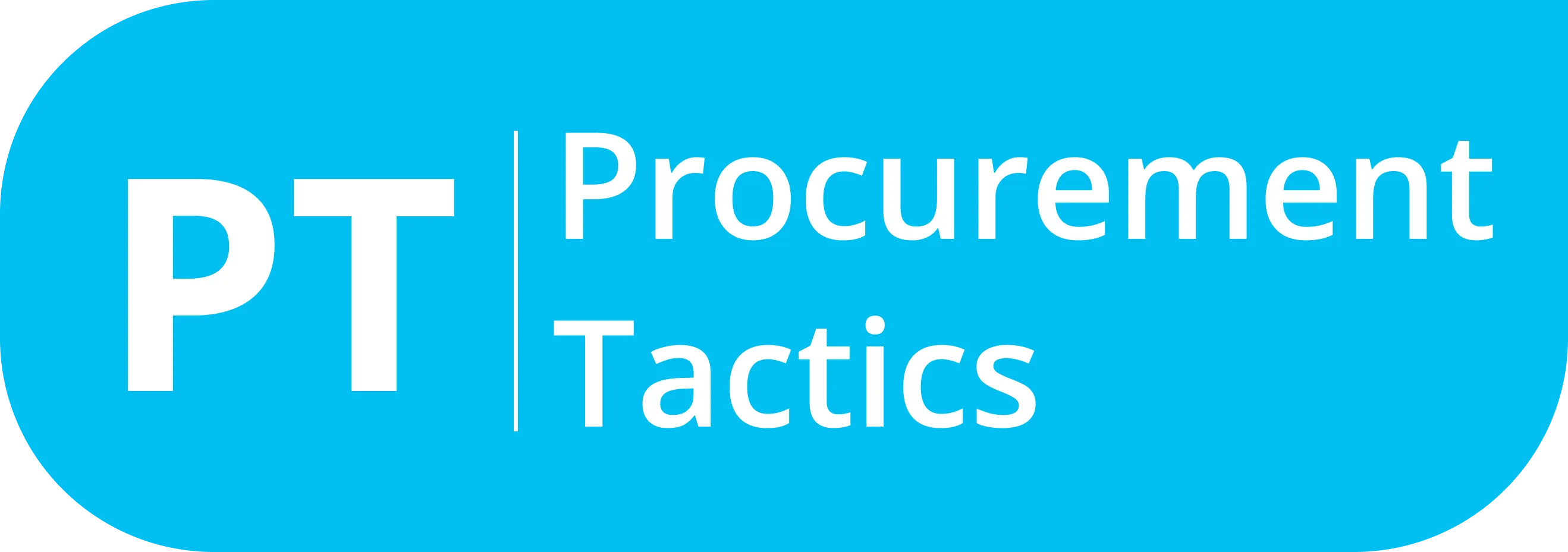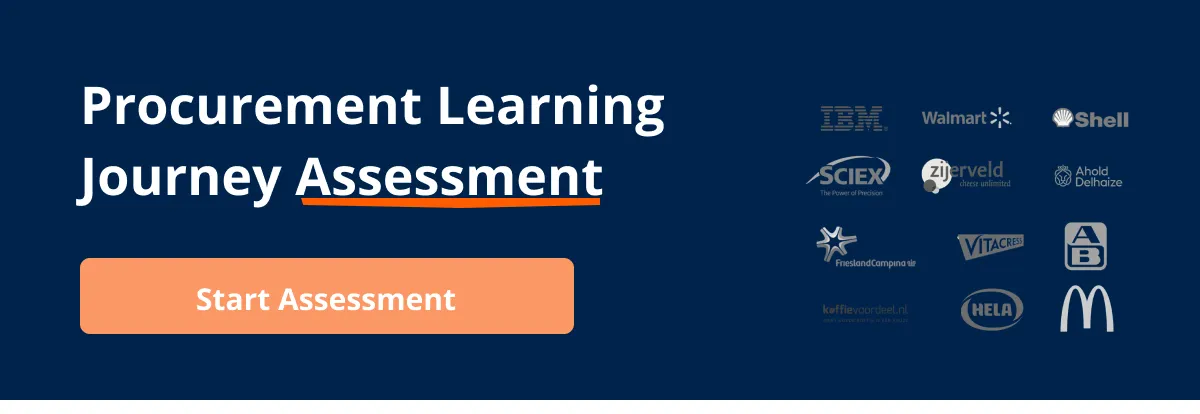Written by Marijn Overvest | Reviewed by Sjoerd Goedhart | Fact Checked by Ruud Emonds | Our editorial policy
Procurement Best Practices — 9 Tips To Become A Better Procurement Professional
Key takeaways
- Procurement best practices are the procedures that are deemed effective in the procurement process.
- Procurement management frameworks, automation, and supplier engagement are some of the best practices to follow in procurement.
- Relying on one supplier without an alternative will land you in pitfalls and supply chain disruptions.
Procurement best practices are regarded as effective procedures in the procurement process. Many of us have our ways on how to deal with challenges in our respective fields of profession. But some ways are effective for your profession.
For this article, we will guide you on the best procurement practices. We will explore how these practices can help you in your profession or your business.
Reading this article will allow you to use these best practices in your business. This article will also enable you to change the procedures that are not contributing. Be it to your growth, or the procurement process.
I have created a free-to-download editable procurement process: 7 steps template. It’s a PowerPoint file, together with an Excel file, that can help you implement best practices in your procurement process. I even created a video where I’ll explain how you can use this template.
What is Procurement?
Before we guide you on all the best practices, we must review what procurement means. Procurement captures the process of sourcing and gathering all materials. It includes your products or services.
Professionals consider procurement as a definite process. It is identifying, shortlisting, selecting, and acquiring the products or services. These things are needed by the company.
Below are the usual steps in the procurement process:
- Assessment and identification of the needs of the company
- Research for potential suppliers
- Creating a list of your potential suppliers
- Request for quotation or proposal
- Check the quote or the proposal sent by the suppliers
- Negotiate the terms with the suppliers
- Award the contract to your selected suppliers
- Arrange and receive the products or services
- Perform quality check
- Analyze results, margins, and KPIs
- Develop and maintain your relationship with your suppliers.
Common Bottlenecks in the Supply Chain
With what we have discussed above, there are many steps in the procurement process. The multitude of steps can be an opportunity for bottlenecks. These factors arise during the procurement cycle.
Many businesses experience hurdles in managing time and resources. It is due to unforeseeable disruptions in the supply chain. According to a report made in 2019 by Gartner, up to 48% of chief procurement officers admit to risks. These unknown risks in the supply chain are their biggest challenge.
The report also shows that 64% of procurement chief officers agree with the inability to accurately gauge the supplier’s performance. This problem poses a great risk to the supply chain.
Additionally, 72% of them agreed that underutilization of technological advancements and procurement tools has significantly disrupted the performance of organizations. The lengthy manual process slows down the procedures. It also decreases the growth of the organization.
Lastly, Reliance on a single supplier is highly problematic. If your supplier has faced an emergency that results in failing to meet your demand, delays in your production are inevitable. That is why it is important to have a good strategic sourcing process. It helps avoid these problems. This is because it requires the business to find multiple suppliers for each input.
Procurement Best Practices
The bottlenecks mentioned above can be mitigated by using the procurement best practices below:
1. Create Procurement Management Frameworks
You need to create a strong framework before you address the problems. This is important in the procurement process. You should know that it is not an overnight process. Take your time to map out the workflows and build standard procedures.
The following are the processes where your framework should create guidelines:
- Monitor and approve purchase requests
- Manage your suppliers
- Quality assurance
- Payment and invoice
- Keep records
- Hiring new members of your team. Use an email finder extension to easily get in touch with potential candidates
- Train your employees on products and their procedures
2. Engage with your supplier
Your relationship with your supplier is vital to the success of your organization. Strategizing with your suppliers is vital to ensure delivery timeliness and quality assurance.
Developing supplier relationships can help you test performance and effectiveness.
You can engage your suppliers to collaborate effectively. Considering if you know them based on the data you gathered from their performance.
As an experienced procurement manager at companies such as Ahold Delhaize and Friesland Campina, I cannot stress enough how important this is. Procurement is fundamentally about people. It’s not two companies talking to each other. But two individuals representing those companies. When I started at Ahold Delhaize in a category with two major suppliers, the relationship with Supplier A was very good.
However, with Supplier B, it was very bad. Both I and the account leads from these companies started around the same time. I got along very well with the supplier where the relationship was bad. Sadly, the opposite was true for the supplier where the relationship was good.
In a short time, the entire collaboration changed, including the results. Sales with Supplier B increased significantly and we gained a lot of market share. This growth is thanks to this collaboration, and we also grew in margin. For them, the collaboration was also very fruitful. We were able to achieve this because we genuinely wished the best for each other.
Unfortunately, this was not the case with Supplier A. The companies were the same, but the people were not. This difference caused a significant shift in revenue from Supplier A to Supplier B.
3. Improve your inventory
Inventory is often overlooked in the procurement process. But, this is more important than what you think. One of the procurement best practices is keeping your inventory at an optimal level.
The cost of taxes, warehouse fees, outdated products, and insurance adds up over time. It harms your return on investment when you hold it for too long. The inventory should rotate regularly to lower these risks and unnecessary expenses.
Data is immensely important. From experience, I can say that investing in it is highly valuable. Know what and how much inventory you have and link this to the expected rotation. Based on that information, you can estimate how many weeks of inventory you have and where you may need to make adjustments by running additional promotions.
4. Automation of procurement process
An efficient procurement process will save you time and money. It will also give you more time to focus on your customers’ preferences and feedback. However, you need to automate procurement processes to make it more efficient.
Employing automation in your procurement process will cut repetitive tasks. This will streamline your procedures. This enables your employees to focus on other things.
Another benefit of automation is that it is free from human error. There are times when employees cannot avoid making mistakes. Automation helps streamline workflows that improve your employees’ satisfaction.
The following are the critical processes you need to automate:
- Payment reconciliation
Payment reconciliation compares your accounting and your payments. It is to make sure that they match. Through this, your cash flow is secured with ease. Also, your team can focus on other tasks than processing each transaction manually.
- Accounts payable
Accounts payable automation platforms refine everything from invoice coding to purchase orders. With this, you can efficiently manage accounts payable processes without human interaction.
- Invoice
Invoice automation is a complex process that is an entire area of its own. Even if it is under accounts payable automation. It handles price matching, data entry, approvals, purchase orders, and invoice processing.
By automating invoices, you can reduce the occurrence of late fees. These problems can make your suppliers happy resulting in giving you discounts. A proper manner to automate these processes is via EDI (Electronic Data Interchange)
5. Integrate your procurement process
The procurement cycle is full of approvals that create barriers. Ultimately, even with the help of automation, you will still have these gaps in your procedures.
That is why you must integrate your procurement process. Instead of manually transferring data between procurement systems, you must connect it so that it can be processed effectively.
6. Transparency
The stakeholders of your company must have the ability to see all the records, purchase orders, and technical specifications in real time. This ensures that they are guided with the tasks that they will do.
A transparent system enables better record management, strategic sourcing procedures, and cost reduction in procurement.
The following are the steps to ensure transparency in procurement:
- Plan and implement strategic policies
- Document all steps in the procurement process
- Manage and update your list of potential suppliers regularly
- Create flawless procurement contracts
- Perform audits from time to time
7. Work with procurement professionals
We know that procurement is a complex and dynamic system that has overlapping procedures. This makes your procurement to be challenging to improve.
Many questions surround those who have just started in procurement. Even some procurement managers are confused about where to start improving their procurement processes.
This is where experts in the field of procurement come in. Those who have a comprehensive background in procurement can help you where to start. Their knowledge and experience show them how to streamline your procedures even if it seems impossible.
8. Know your corporate responsibility
Many customers nowadays care about their responsibility in the community. That is why you need to be mindful of the impact of your supply chain on the economy and the environment.
With the cancel culture on the rise, your organization must take note of all the expectations of the customers. If you fail or make a wrong move, you might end up damaging your reputation which is beyond repair.
There are several examples of companies that have collapsed due to a lack of CSR. Examples include Enron, which went bankrupt due to their accounting scandal; the Diesel or emissions scandal at Volkswagen, where they manipulated software to hide their emissions; and BP, where negligence and insufficient safety measures led to an explosion on their oil platform, resulting in one of the largest oil spills in history.
9. Create dashboards
Creating data dashboards enables your employees to see real-time data in your supply chain in a way they can easily comprehend.
Your sourcing will become more flexible with a clear data dashboard in procurement. It can show accurate spend analysis, price fluctuations, and the performance of your supplier.
Conclusion
Procurement does not only cover the sourcing and acquisition of goods and services. Rather, it encompasses a lengthy process. It starts with assessing and identifying the needs of a company. Ultimately, it focuses on closing deals with suppliers.
Moreover, procurement professionals also need to mitigate risks in the procurement stage. It enables them to have a smooth and problem-free supply chain.
Thus, the mentioned procurement best practices will only be effective in certain scenarios. Also, if it is only regarded and used with proper execution and caution. Nonetheless, it’s better to keep these in mind.
Frequentlyasked questions
What is the meaning of procurement best practices?
Procurement best practices are the procedures that are deemed effective in the procurement process.
Do these counter the bottlenecks in procurement?
Yes. Procurement best practices eliminate the bottlenecks by using the methods that can help your procurement process.
Do I need to employ it in my business?
Yes. Procurement best practices are essential procedures to be used in every business.
About the author
My name is Marijn Overvest, I’m the founder of Procurement Tactics. I have a deep passion for procurement, and I’ve upskilled over 200 procurement teams from all over the world. When I’m not working, I love running and cycling.


